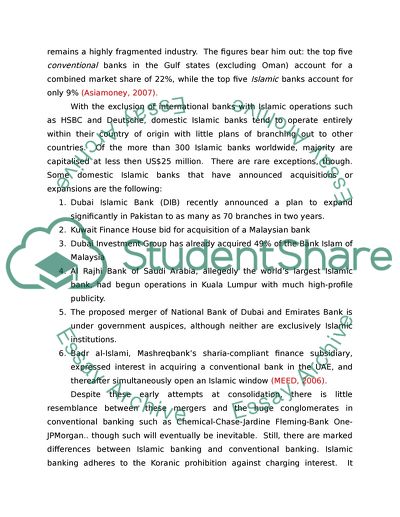Cite this document
(Institutional Infrastructure for Islamic Bank Mergers and Acquisitions Research Proposal, n.d.)
Institutional Infrastructure for Islamic Bank Mergers and Acquisitions Research Proposal. Retrieved from https://studentshare.org/finance-accounting/1733173-mergers-acquisitions-of-any-islamic-country-banks-or-companies-which-you-can-find
Institutional Infrastructure for Islamic Bank Mergers and Acquisitions Research Proposal. Retrieved from https://studentshare.org/finance-accounting/1733173-mergers-acquisitions-of-any-islamic-country-banks-or-companies-which-you-can-find
(Institutional Infrastructure for Islamic Bank Mergers and Acquisitions Research Proposal)
Institutional Infrastructure for Islamic Bank Mergers and Acquisitions Research Proposal. https://studentshare.org/finance-accounting/1733173-mergers-acquisitions-of-any-islamic-country-banks-or-companies-which-you-can-find.
Institutional Infrastructure for Islamic Bank Mergers and Acquisitions Research Proposal. https://studentshare.org/finance-accounting/1733173-mergers-acquisitions-of-any-islamic-country-banks-or-companies-which-you-can-find.
“Institutional Infrastructure for Islamic Bank Mergers and Acquisitions Research Proposal”, n.d. https://studentshare.org/finance-accounting/1733173-mergers-acquisitions-of-any-islamic-country-banks-or-companies-which-you-can-find.


